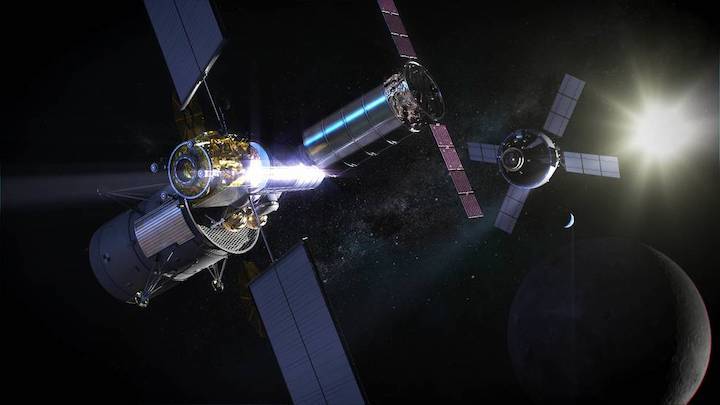19.08.2019

By Tammy Long
NASA's Kennedy Space Center
In another major step toward landing American astronauts on the lunar surface by 2024, NASA is asking industry to respond to a Request for Proposals to deliver cargo, science experiments and supplies to the Gateway to support Artemis missions to the lunar surface. Commercial supply services will support the agency’s Artemis lunar exploration program which includes sending the first woman and the next man to surface of the Moon within five years, and preparing for human exploration of Mars.
The agency is seeking capabilities from American companies to deliver a logistics spacecraft with pressurized and unpressurized cargo to the Gateway for six months of docked operations followed by automatic disposal. The logistics spacecraft must launch on a commercial rocket.
“Working with industry to deliver supplies necessary to support our lunar missions is a critical step to accelerate our return to the Moon under the Artemis program including meeting that bold goal to land the next American astronauts on the Moon by 2024,” said NASA Administrator Jim Bridenstine. “This solicitation builds on the capabilities NASA pioneered in low-Earth orbit with commercial cargo resupply to the International Space Station and is the next step in commercialization of deep space. We look forward to industry’s response to our latest solicitation.”
The agency previously asked industry for innovative ideas to transport supplies between Earth and the Gateway, which will be located about 250,000 miles away in a lunar orbit. NASA followed up that request with a draft solicitation earlier this summer.
“We chose to minimize spacecraft requirements on industry to allow for commercial innovation, but we are asking industry to propose their best solutions for delivering cargo and enabling our deep space supply chain,” said Mark Wiese, NASA’s Gateway logistics element manager at Kennedy Space Center in Florida. “In addition to delivering cargo, science and other supplies with these services, private industry also has the opportunity to deliver other elements of our lunar architecture with this solicitation.”
This solicitation is for a multi-award, firm-fixed price, indefinite delivery/indefinite quantity contract for 15 years, with a maximum $7 billion value. The guaranteed minimum value for any award is two missions.
NASA is also asking responders to address logistics spacecraft design, cargo mass capability, pressurized volume, power availability for payloads and, transit time to Gateway.
Following initial award, there may be future contract opportunities for new service providers to ensure capabilities remain competitive. If approved in advance by NASA, a commercial provider may also use a mission to deliver, remove and/or return non-NASA cargo as long as it does not interfere with the agency mission, furthering the development of a robust deep space economy.
This solicitation is the latest in a line of work by the agency to accelerate its Moon to Mars exploration plans by working with American aerospace companies. NASA recently awarded a contract to Maxar Technologies to design, develop, launch and demonstrate the power and propulsion element by 2022. Negotiations are ongoing for development of the habitation and logistics outpost (HALO) module. The agency is also working on another draft solicitation for the integrated human landing system. A final solicitation will be released in the future.
Charged with returning to the Moon within five years, NASA’s lunar exploration plan encompasses a two-phase approach: speed – landing on the Moon by 2024 – and establishing a sustained multi-national human presence on and around the Moon by 2028. The agency will leverage what it learns on the Moon to prepare for the next giant leap – sending astronauts to Mars.
Quelle: NASA

